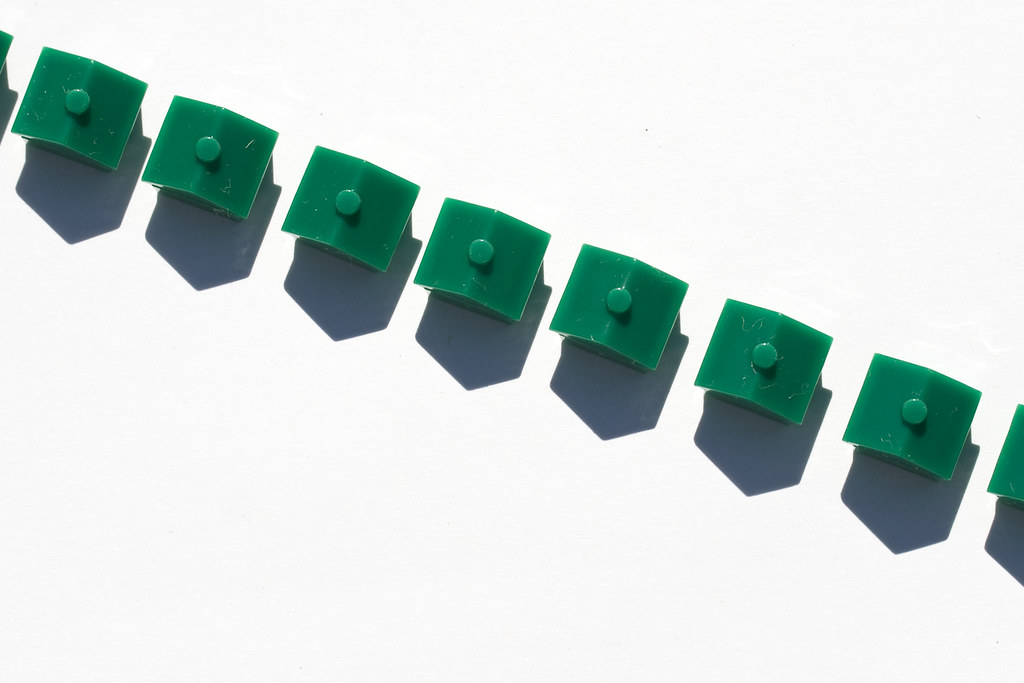In today’s dynamic housing market, where home prices and interest rates remain elevated, prospective homebuyers and current homeowners are continually seeking avenues to achieve their financial goals. Amidst this complex environment, the Adjustable-Rate Mortgage (ARM) has re-emerged as a compelling, albeit often misunderstood, option.
Historically, ARMs have carried a reputation that sometimes overshadowed their potential benefits, largely due to past market conditions. However, the current economic landscape, marked by persistent high interest rates and tight supply, has prompted a renewed look at these loans. For many, an ARM could represent a strategic path to homeownership or refinancing, offering an initial period of lower payments that can significantly impact affordability.
This in-depth exploration aims to demystify the Adjustable-Rate Mortgage, shedding light on its fundamental structure, its growing popularity, and how modern ARMs are designed with borrower safeguards in mind. We will delve into the mechanisms that govern these loans, the protections available to borrowers, and the significant advantages they can offer, particularly in today’s unique market conditions. Understanding these facets is crucial for anyone considering an ARM as part of their financial strategy.

1. **Understanding Adjustable-Rate Mortgages (ARMs): A Core Definition**
An Adjustable-Rate Mortgage, commonly known as an ARM, is a type of home loan distinguished by an interest rate that can change over time. Unlike a fixed-rate mortgage, where the interest rate remains constant throughout the entire loan term, an ARM features an initial fixed-interest period, after which the rate adjusts periodically to reflect prevailing market conditions.
This potential fluctuation, however, does not begin immediately. Instead, the ARM’s rate is fixed for a predetermined period at the start of the loan, typically ranging from three to 10 years. During this introductory phase, borrowers benefit from predictable, often lower, monthly payments, providing a window of financial stability.
Once this initial fixed period concludes, the interest rate on an ARM begins to adjust. These adjustments usually occur every six or 12 months, aligning with changes in a benchmark rate index, such as the secured overnight financing rate (SOFR). This means that a borrower’s monthly payment could either increase or decrease, depending on the movement of market rates.
For example, a common type is a 5/1 ARM, which maintains a fixed rate for the first five years, followed by annual rate adjustments. The terms of an individual loan and the chosen benchmark rate index dictate precisely how these changes will impact the borrower’s payments. It’s this dynamic nature that requires careful consideration and understanding.

2. **The Current Allure of ARMs: Why They’re Gaining Popularity**
In today’s market, Adjustable-Rate Mortgages have become increasingly attractive, particularly as home prices and interest rates remain high. These loans typically offer lower fixed introductory rates, making them less expensive than traditional 30-year fixed-rate mortgages for the initial several years. This upfront savings can be a significant draw for many homebuyers.
Joel Kan, vice president and deputy chief economist at the Mortgage Bankers Association, noted that while overall mortgage demand has cooled due to elevated interest rates and tight supply impacting housing affordability, ARMs have seen a notable increase. During the week ending September 12, 2025, ARMs constituted 12.9% of mortgage applications, nearing a post-pandemic high.
Melissa Cohn, regional vice president of William Raveis Mortgage, states, “An [ARM] is a good option to get us through this difficult rate period that we’re in.” She suggests that with various economic issues at play, an ARM may be the practical choice for buyers who are motivated to finalize a deal and purchase a home they can afford, leveraging the initial savings ARMs offer in a high-rate environment.
This rising popularity underscores a strategic shift among some borrowers who are comfortable with the initial uncertainty for the sake of immediate affordability. With current ARM rates often a full percentage point lower than a traditional 30-year fixed mortgage, as observed for a 5-year ARM last week, these loans provide tangible monthly savings that can make a difference in securing a home in pricier markets, as highlighted by economist Michael Fratantoni at the Mortgage Bankers Association.

3. **How Modern ARMs Differ: Safer Loans for Today’s Market**
For many, the mention of Adjustable-Rate Mortgages might conjure images of the late-aughts housing boom and the subsequent financial crisis. However, it’s crucial to understand that today’s adjustable-rate mortgages are significantly different and considerably safer than their predecessors. The risky “teaser rate” mortgages, which reset much faster and were loosely distributed, are largely gone from the market.
Wharton School real estate professor Ben Keys emphasizes this evolution, stating, “The kinds of mortgages that are being originated today are considerably safer than those that were originated during the housing boom.” This enhanced safety stems from stricter lending standards and built-in consumer protections that were not prevalent in earlier iterations of ARMs.
Modern ARMs typically lock in lower introductory rates for longer periods, commonly five, seven, or even 10 years, providing borrowers with an extended period of predictable payments. This contrasts sharply with the shorter fixed periods of the past, offering greater stability and time for borrowers to plan their finances or potentially sell or refinance before the rate adjusts.
This shift reflects a more responsible approach to mortgage lending, focusing on sustainable homeownership rather than speculative financing. The current design of ARMs, combined with robust regulatory oversight, ensures that while they offer flexibility and potential savings, they also incorporate safeguards designed to protect borrowers from drastic and unmanageable payment hikes.

4. **Key Characteristics of ARMs: Initial Rate Period and Adjustment Mechanisms**
Understanding the mechanics of an Adjustable-Rate Mortgage is fundamental to appreciating its potential benefits and risks. A core characteristic of an ARM is its initial rate period, which is the segment of the loan term during which the interest rate remains fixed. This period can vary, typically ranging from three to 10 years, with 5/1, 7/1, and 10/6 ARMs being common types, indicating the fixed period length and adjustment frequency.
Following this initial fixed period, the ARM transitions into its adjustable phase. Here, the interest rate periodically changes, usually every six or 12 months, based on specific market indicators. The new rate is calculated using two primary components: an index and a margin. The index reflects current market trends, such as the secured overnight financing rate (SOFR), and fluctuates over time.
Conversely, the margin is a percentage specified by the lender that remains constant throughout the entire loan term. This margin is added to the chosen index rate to determine the new interest rate at each adjustment period. For example, in a 5/1 ARM, the rate remains fixed for the first five years, and then starting from year six onward, it adjusts annually based on the index plus the margin.
This combination of a fluctuating index and a fixed margin determines how much your mortgage rate changes at each adjustment. It’s this structure that allows ARMs to respond to market shifts, potentially offering lower payments if interest rates fall, but also posing the risk of higher payments if rates increase. Borrowers should always be clear on which index their ARM is tied to and what the margin will be.

5. **The Protective Measures: Understanding ARM Rate Caps**
One of the most critical features distinguishing modern Adjustable-Rate Mortgages from older, riskier versions is the inclusion of rate caps. These safeguards are designed to limit how much the interest rate, and consequently your monthly payments, can change during the life of the loan. Rate caps provide a crucial layer of protection for borrowers, making future payment fluctuations more predictable within a defined range.
There are typically three types of rate caps associated with an ARM: an initial adjustment cap, periodic adjustment caps, and a lifetime cap. The initial adjustment cap restricts how much the interest rate can increase during the very first adjustment after the fixed period ends. This prevents a sudden, drastic jump in payments right at the outset of the adjustable phase.
Periodic adjustment caps, on the other hand, limit how much the rate can change during subsequent adjustments, usually on an annual or semi-annual basis. For example, a common 5/1 ARM with a 5/2/5 cap structure would allow a potential rate increase of up to 5% in the sixth year (initial adjustment), followed by annual increases capped at 2% after that (periodic adjustments).
Finally, the lifetime cap sets an absolute maximum on how much the interest rate can increase over the entire term of the loan, regardless of market conditions. In the 5/2/5 example, this means a lifetime cap of 5% on total rate increases from the initial rate. These caps, as U.S. Bank notes, “limit how much the interest rate and/or payments can rise per year and over the life of the loan,” providing essential financial boundaries for borrowers.
Read more about: Unleashing Performance, Ensuring Protection: 12 Sports Cars Where Speed Meets Stellar Safety Ratings

6. **Primary Advantages of ARMs: Initial Savings and Flexibility**
A clear and compelling advantage of an Adjustable-Rate Mortgage is the considerably lower interest rate it offers compared to fixed-rate loans during its initial phase. This translates directly into reduced monthly payments for the first several years of the loan, providing significant upfront savings for borrowers. This can be particularly impactful in high-rate environments, making homeownership more accessible.
This initial low rate can also increase a borrower’s purchasing power, potentially allowing them to qualify for a larger mortgage than they might with a conventional fixed-rate loan. The context highlights that a percentage point difference in the yearly interest rate between an ARM and a conventional fixed-rate mortgage could mean “hundreds of dollars of savings each month,” which is a substantial benefit, especially for those in pricier markets.
Beyond immediate cost savings, ARMs offer a valuable degree of flexibility. They are often an ideal choice for individuals who do not plan to stay in their home for the long term. If you anticipate selling your home or refinancing before the fixed introductory period ends, an ARM allows you to take advantage of those lower initial payments and potentially avoid the adjustable phase altogether.
This flexibility is particularly helpful if your life circumstances are likely to change in the near future, such as a planned relocation or an expected increase in income. By utilizing an ARM, you can manage your housing costs effectively during a specific window, aligning your mortgage strategy with your personal and financial timeline, and potentially making those lower payments work harder for you, such as by making long-term investments with the savings.

7. **The Potential Downsides and Risks of Adjustable-Rate Mortgages**
While the initial appeal of lower interest rates with an Adjustable-Rate Mortgage (ARM) is undeniable, it’s equally important for prospective borrowers to fully understand the potential downsides and inherent risks. The most significant concern for many is the uncertainty surrounding future monthly payments. Once the initial fixed-rate period concludes, your interest rate, and consequently your payment, can fluctuate based on market conditions.
This variability can make long-term financial planning challenging. Unlike a fixed-rate mortgage where principal and interest payments remain constant, an ARM’s adjustable phase introduces an element of unpredictability. Borrowers must be prepared for the possibility that their payments could rise, potentially significantly, if interest rates climb. Even with rate caps in place, a substantial increase could still strain a household budget.
A critical risk arises if personal or broader economic factors prevent a borrower from selling their home or refinancing their ARM before the fixed introductory period ends. Should this occur, borrowers must ensure they have the financial capacity to comfortably cover the potentially higher loan costs once the rate adjusts. This scenario underscores the importance of a robust financial buffer and a clear exit strategy if considering an ARM.
For example, if an introductory rate is 7.3% and resets to 9.3% after three years, the monthly payment on a $360,000 mortgage would increase by $506 per month from $2,468 to $2,974. This substantial jump highlights the financial impact of rate adjustments and why borrowers must assess their ability to absorb such changes. Understanding these “cons of ARMs” is essential for making an informed choice.

8. **Identifying the Ideal Candidates for Adjustable-Rate Mortgages**
Given both their advantages and potential risks, Adjustable-Rate Mortgages are not a one-size-fits-all solution; rather, they are particularly well-suited for specific borrower profiles and financial circumstances. One of the primary groups for whom an ARM might be a good idea are those who plan to sell their home or refinance within a few years, specifically before the initial fixed-rate period expires. This strategy allows them to capitalize on the lower introductory rates without experiencing the adjustable phase.
Another ideal candidate is someone who anticipates a significant increase in their income before their ARM adjusts. This projected income growth could provide the financial cushion needed to comfortably absorb any potential payment hikes when the rate resets. Additionally, borrowers who could leverage other assets to pay off their mortgage early, or who intend to make long-term investments with the initial monthly savings, might find an ARM appealing.
Those who are comfortable with a degree of uncertainty about their future rate and payment, especially within the bounds of rate caps, may also find ARMs to be a valuable tool. As stated, an ARM is a good choice if you “could still afford the monthly payment if your rate reached the lifetime adjustment cap.” This emphasizes the importance of understanding and stress-testing your budget against the maximum possible payment.

9. **Delving into the Factors That Influence Adjustable-Rate Mortgage Rates**
Understanding what drives the fluctuations in Adjustable-Rate Mortgage rates is crucial for borrowers to anticipate potential changes in their monthly payments. Just like fixed mortgage rates, ARM rates are significantly influenced by broader economic conditions and key monetary policy decisions, such as changes to the Federal funds rate. These macroeconomic factors set the general interest rate environment.
A unique and critical factor specifically affecting ARM rates is the index rate. This benchmark rate, such as the secured overnight financing rate (SOFR), serves as a fundamental component in calculating the new interest rate at each adjustment period. The index rate directly reflects current market trends, meaning that if the SOFR rises, your ARM’s rate is likely to rise, and conversely, if it falls, your rate could decrease.
In addition to the fluctuating index, a borrower’s individual financial strength plays a substantial role in determining their ARM rate, specifically influencing the margin. The margin is a fixed percentage added to the index rate by the lender, and it remains constant throughout the loan term. Your credit score, debt-to-income ratio, and other indicators of financial health can affect the margin you are offered, with stronger profiles typically securing lower margins.

10. **Discussing Strategies for Managing Adjustable-Rate Mortgages**
Effective management of an Adjustable-Rate Mortgage requires proactive planning and a clear understanding of the loan’s mechanisms. One of the most common and strategic approaches is to refinance the ARM into a fixed-rate loan, particularly if interest rates drop or before the initial fixed period ends. This allows borrowers to lock in a stable payment and eliminate the uncertainty of future rate adjustments.
Borrowers can also leverage the initial savings offered by an ARM’s lower introductory rate. These “hundreds of dollars of savings each month” can be strategically deployed. For instance, some may choose to make additional principal payments during the fixed period, reducing the loan balance and thus mitigating the impact of future rate increases. Others might use these savings to build a substantial financial cushion, providing funds to cover higher payments if rates rise.
A key management strategy involves a thorough understanding of your ARM’s rate caps. Knowing the initial, periodic, and lifetime caps helps set realistic expectations for potential payment increases and ensures that even at its maximum, the payment remains affordable. Using mortgage calculators to model payments under various rate scenarios, up to the lifetime cap, is a practical step to assess affordability and plan accordingly.
Furthermore, it is advisable to continually monitor market interest rates and economic forecasts. This vigilance allows borrowers to identify opportune times for refinancing or to simply be psychologically and financially prepared for upcoming adjustments. Proactive engagement with a mortgage professional can also provide valuable insights and personalized advice on managing your specific ARM effectively.

11. **Comparative Analysis: Adjustable-Rate vs. Fixed-Rate Mortgages**
Choosing between an Adjustable-Rate Mortgage (ARM) and a fixed-rate mortgage is a pivotal decision for any homebuyer, and it ultimately comes down to aligning the loan product with individual financial goals and risk tolerance. A quick comparison reveals the core differences: ARMs offer lower starting rates but variable payments after the fixed period, while fixed-rate mortgages provide higher initial rates but consistent payments throughout the loan term.
The fundamental trade-off is between initial cost savings and long-term payment stability. ARMs are often touted for their ability to offer “more buying power amid rising housing costs” due to lower upfront monthly payments. This can be a significant advantage in today’s high-rate environment, making homeownership more accessible in the short term. However, this comes with the inherent risk of future rate adjustments and potentially higher payments.
Conversely, fixed-rate mortgages appeal to those who prioritize predictability and security. With a fixed rate, your monthly principal and interest payments remain the same, simplifying budgeting and shielding you from interest rate hikes over the life of the loan. This makes them “ideal for long-term homeowners” or those who are risk-averse and prefer the certainty of consistent payments, even if the initial rate is higher.
The decision hinges on your time horizon, market outlook, and comfort with risk. If you plan to sell within a few years or expect rates to fall, an ARM might be advantageous. If you envision staying in your home for many years and value stable payments above all else, a fixed-rate mortgage is likely the more suitable option, providing “predictable and steady payments” regardless of market fluctuations.

12. **Making an Informed Mortgage Decision in Today’s Market**
Navigating the complexities of mortgage options in today’s dynamic housing market requires careful consideration and a truly informed approach. The decision to choose between an Adjustable-Rate Mortgage (ARM) and a fixed-rate mortgage should never be taken lightly; it must be a strategic choice deeply aligned with your personal financial situation, future plans, and comfort with risk.
To make this critical choice, potential homeowners should begin by honestly assessing their long-term intentions. Ask yourself: “How long do I realistically plan to stay in this home?” If the answer is less than the fixed-rate period of an ARM, its initial savings become a compelling factor. However, if your vision extends far into the future, the stability of a fixed-rate loan likely outweighs the upfront benefits of an ARM.
Furthermore, understanding your personal financial resilience is paramount. Can you comfortably manage a potentially higher monthly payment if your ARM’s rate adjusts upwards, even if it hits its lifetime cap? While ARMs “limit how much the interest rate and/or payments can rise,” being prepared for that maximum scenario is a smart financial practice. This foresight can prevent undue stress and financial strain down the road.
Finally, do not underestimate the value of professional guidance. Engaging with experienced loan officers and financial advisors is crucial. They can explain the nuances of ARM risks, provide personalized payment projections, and help you compare various loan products based on your unique circumstances. “Ask loan officers to explain ARM risks and exactly how much the payments could increase” to ensure you have all the necessary information to proceed with confidence.
Read more about: Unveiling the True Cost: A 7-Year Step-by-Step Guide to Calculating Ownership Expenses
The resurgence of Adjustable-Rate Mortgages in today’s market offers a viable, and often strategic, alternative for many homebuyers and refinancers. Modern ARMs come equipped with stronger borrower protections and offer significant initial savings, making them a compelling option for those with specific short-term plans or expectations of future financial flexibility. However, understanding their inherent risks, particularly the potential for payment fluctuations, is non-negotiable. By carefully weighing the pros and cons, assessing personal financial goals, and seeking expert advice, borrowers can confidently select the mortgage solution that best positions them for long-term financial success in an ever-evolving housing landscape. The key is not to view ARMs as a universal solution or a relic of the past, but as a sophisticated financial instrument requiring diligence and foresight.




